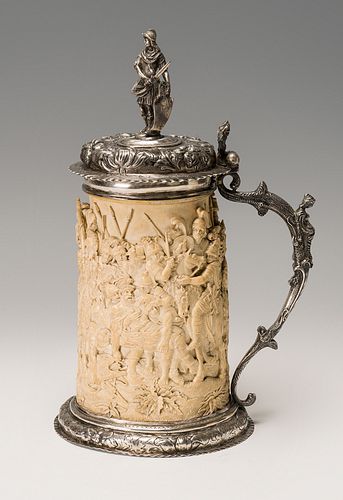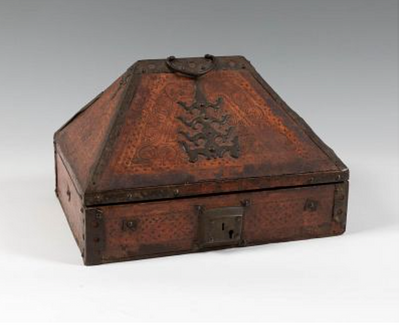Tankard; Germany, 18th century. Ivory and silver. With contrasts on the reverse of the base.
Lot 96
About Seller
Setdart Auction House
Carrer Aragó 346
Barcelona
Spain
Setdart Subastas was born in 2004 and is currently the first online art auction in Spain with solidity, prestige and reliability guaranteed by our more than 60,000 users. Setdart has a young, dynamic and enterprising team ready to successfully manage the purchase and sale of art works through custom...Read more
Categories
Estimate:
$15,000 - $16,000
Absentee vs Live bid
Two ways to bid:
- Leave a max absentee bid and the platform will bid on your behalf up to your maximum bid during the live auction.
- Bid live during the auction and your bids will be submitted real-time to the auctioneer.
Bid Increments
| Price | Bid Increment |
|---|---|
| $0 | $10 |
| $200 | $25 |
| $500 | $50 |
| $1,000 | $100 |
| $3,000 | $200 |
| $5,000 | $500 |
| $10,000 | $1,000 |
| $20,000 | $2,000 |
| $50,000 | $5,000 |
About Auction
By Setdart Auction House
Jun 2, 2021
Set Reminder
2021-06-02 07:00:00
2021-06-02 07:00:00
America/New_York
Bidsquare
Bidsquare : DECORATIVE ARTS XVI-XIX
https://www.bidsquare.com/auctions/setdart-auction-house/decorative-arts-xvi-xix-7000
Setdart Auction House sofia@setdart.com
Setdart Auction House sofia@setdart.com
- Lot Description
Tankard; Germany, 18th century. Ivory and silver. With contrasts on the reverse of the base. Attached certificate of antiquity Measurements: 43 x 25 x 17 cm. The tankard is a type of glass consisting of a cylindrical tank, with a vertical handle and a flat or curved lid. It was originally conceived as a container for drinking beer, hence the lid, to preserve the gas of this beverage. It appeared in the 17th century in England, and even then it was common to lengthen the hinge of the lid to support the thumb. In this case we have a piece that, despite being perfectly functional, would be conceived as a purely decorative object, due to the quantity and quality of the carving work, as well as the value of the material itself. This importance of the tankard is further enhanced by the combination of ivory with embossed, chiseled and engraved silver, composing the base, the handle and the lid. In the central body of the vessel a war scene of great complexity has been carved in deep relief, creating the impression of depth thanks to the gradation of the volume and the position of the different soldiers facing each other in the battle. It is the battle of Gaugamela, a dispute fought in 331 BC between the Persian army under the command of King Darius III and the Macedonian army under the command of Alexander the Great. The level of detail achieved by the author is impressive in this relief, which manages to define armor, manes and faces to perfection. The meticulous work on the silver also stands out. The work of the finials and handles of figurative character has its roots in the 16th century, when the artists especially liked this type of finials, to which they gave animal, human and fantastic forms, linked to each other, hiding the structure and giving form to the different parts of the piece. In the tankard in question, the lid has the appearance of a perfectly detailed warrior. On the handle, on the other hand, we see a female bust with its scaled body, a figure like a figurehead with a female effigy. On the base, wider than the vessel, we see carved floral and vegetal motifs.
- Shipping Info
-
In-house shipping available. Please inquire at admin@setdart.com.
-
- Buyer's Premium



 EUR
EUR CAD
CAD AUD
AUD GBP
GBP MXN
MXN HKD
HKD CNY
CNY MYR
MYR SEK
SEK SGD
SGD CHF
CHF THB
THB


















